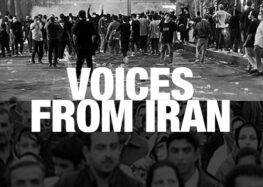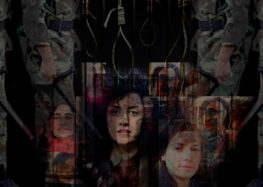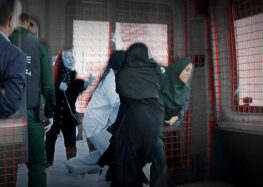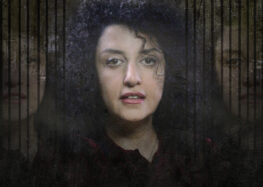Gharchak Prison in Iran: A Cauldron of Abuse and Violations
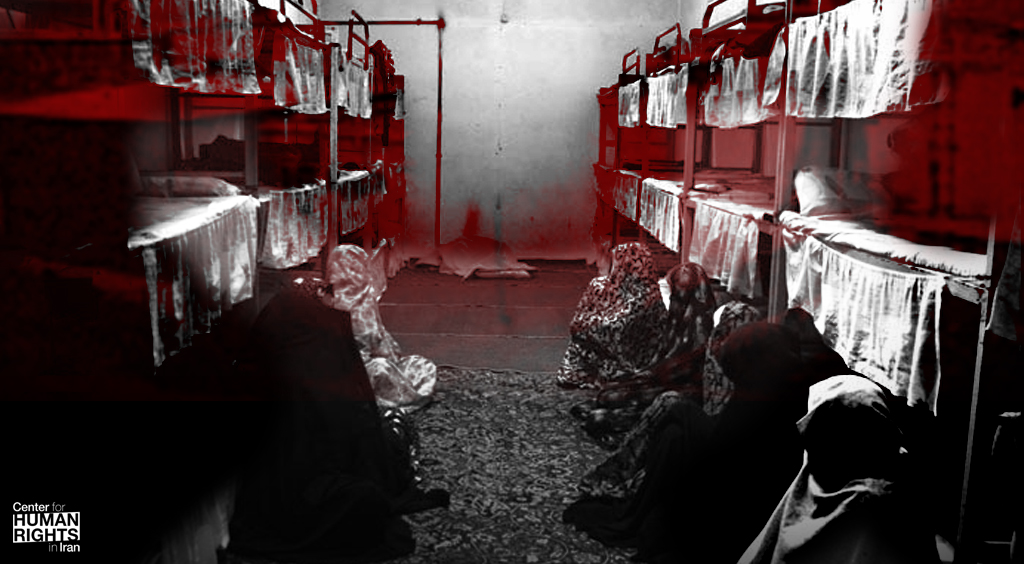
Longstanding, Severe Violations of International Standards for Prisoners
International Community Should Demand Closure of Facility
For more than a decade, the inmates incarcerated at Iran’s Gharchak Prison for women have been desperately protesting inhumane, unsafe and unlawful conditions at the facility that violate all international norms and standards for prisons.
Consistent reports of abusive conditions at Gharchak were first reported in May 2011 by families of political prisoners, who wrote a letter to the judiciary’s Islamic Human Rights Commission calling for an investigation. Those conditions include:
- Lack of access to clean water or proper food;
- Lack of medical care;
- No adherence to basic Covid safety measures;
- Overcrowding such that prisoners must often sleep on floors:
- Lack of protection from violence by prison authorities;
- Lack of separation of violent inmates;
- Lack of temperature control despite intense heat and cold or air ventilation;
- Grossly insufficient toilet facilities and other sanitation facilities.
These conditions severely violate the UN’s minimum standards for the treatment of prisoners, yet since then, nothing has been done to improve conditions, according to prisoners who continue to tell horrific stories of their experiences at Gharchak.
Instead, Iranian judiciary chief Gholam-Hossein Mohseni Ejei has punished individuals who have publicly spoken about the prison. On July 23, 2022, human rights lawyer Mostafa Nili went on trial for “propaganda against the state” for giving an interview in which he described the conditions his clients have to endure in Gharchak.
The international community, including the UN High Commissioner for Human Rights, the UN special rapporteurs on Iran and on torture and other cruel, inhuman or degrading treatment or punishment, the Human Rights Council, and Member Governments around the world should call upon the authorities in Iran to immediately close Gharchak Prison, until its conditions adhere to minimum international standards, the Center for Human Rights in Iran (CHRI) said.
Demands for immediate and unfettered access by independent observers to tour the prison without restriction should also be made, CHRI added.
Litany of Abuses
In September 2021, Giti Hajrahimi, a prisoner convicted of financial crimes, died from COVID-19 due to lack of proper medical care at the prison. Throughout the pandemic, there has been insufficient COVID-19 testing kits, and the unhygienic, overcrowded conditions, as well as the lack of separation among prisoners, caused an outbreak of COVID-19 in 2020. In June 2022, several prisoners were diagnosed with tuberculosis.
The month before, in August 2021, three women committed suicide at Gharchak within a 10-day period.
Yet the Iranian government has taken no substantial steps to improve the prisons’ conditions, nor has it ever allowed independent observers or human rights organizations into the building.
In July of 2022, all of Gharchak’s political prisoners were moved to Evin Prison in Tehran. No official explanation was provided for the sudden transfer. Former political prisoners, including Arash Sadeghi, speculated that officials were aiming to reduce the number of public statements about the prison, since political prisoners are more vocal and have greater platforms with which to reach the public. All other prisoners remain at Gharchak, with conditions unchanged.
While Gharchak’s systemic problems have been repeatedly broadcast by political prisoners, the prison is mostly populated by non-political prisoners—typically, women convicted of committing crimes under extreme poverty. Many of these inmates’ only method of legally obtaining basic supplies is by working difficult jobs as janitors or cooks in the prison.
Political prisoners, which the prison had previously unlawfully housed with the general prison population, were repeatedly subjected to violent attacks by other inmates.
In March 2021, political prisoner Shakila Monfared went on hunger strike to protest threats to her life by an inmate who was armed with a blade made from a tuna can.
Prison authorities have meanwhile violently repressed protests. In February 2019, male prison guards used tear gas and pepper spray to break up a protest by women in wards 1 and 2 who were demanding immediate medical care for one of their fellow inmates.
That month, some 20 prisoners were placed in solitary confinement or transferred to Evin Prison after being violently attacked by prison guards. Those prisoners were denied food and access to gas and electricity required for heating their cells in the cold winter for the first two days as additional punishment.
From Chicken Factory to Prison
Situated in a dry, desert area 17 km (10.5 miles) south of Tehran, near the city of Varamin, Gharchak Prison was originally a chicken factory that the government converted into a drug rehabilitation center for male drug addicts who were considered “dangerous” before using it as a women’s prison in 2010.
The summers in the region are as unbearably hot as the winters are numbingly cold. The desert is also home to a large variety of dangerous insects, including tarantulas and scorpions.
Initially, the prison complex was comprised of seven former chicken factory sheds. Currently, there are 11 sheds that prison authorities use as wards, each with an official capacity of 200 prisoners that is always exceeded. The wards do not have individual cells; beds are located within the wards.
Also, despite legal requirements set by Regulations for the Separation and Classification of Prisoners, prisoners are not housed according to the category of their convictions—a stipulation meant to reduce violent harm. The divisions are instead based on other criteria chosen by the authorities, such as smokers and non-smokers, and those with substance abuse issues.
In a letter to the head of the State Prisons Organization in March 2021 calling for Gharchak’s closure, human rights lawyer Nasrin Sotoudeh described how women prisoners were ostensibly “temporarily” sent to the prison while awaiting a new construction that never materialized.
“The first thing to consider when constructing a prison is having suitable water and weather. This prison, on the other hand, has no clean water or any weather suitable enough to breathe. The crumbling interior space of the prison is very compressed and tight, with low ceilings and no windows or suitable ventilation, creating an inhuman situation. The foul smells are unbearable, even for the prison personnel. Gharchak Prison is located in a remote area surrounded by pastures for raising camels, ostriches and an assortment of other animals. Because of its remote location far from Tehran, many families are unable to visit the prisoners. The unhygienic conditions, unclean water and bad weather cause the rapid spread of many diseases. According to the prison personnel, women prisoners were brought there 10 years ago on a temporary basis until the construction of a new facility, but nothing has been done.”
Prison officials claim that each ward can house 200 prisoners without acknowledging the very tight spaces. On average, the prison population has been comprised of 1,500-2,000 inmates, although at times, up to 600 prisoners have been crammed into a single ward.
The wards do not contain individual cells. Instead, prisoners are forced to sleep on dilapidated mattresses throughout the ward and sometimes on the ground, in violation of the Standard Minimum Rules for the Treatment of Prisoners. The wards also have no windows.
Telephones are in the open-air areas, where prisoners must wait in line for a long time while exposed to harsh weather. Prisoners must also pay for their phone calls.
Family visits are allowed about once every three or four months—to prisoners who’ve gained the favor of officials. Visitation booths are very small and visiting periods are shorter than in other prisons. Most phones in the booths are old and out of order. The face-to-face visitation hall is about 12 sq. meters (130 sq. feet), with four tables filling the entire space. A prison guard stands by the table for the duration of the visit. There are no separate rooms for private meetings with lawyers, which are denied to prisoners at Gharchak.
Lives Endangered by Grossly Improper Care
The prison’s unhygienic conditions, caused by lack of access to clean running water, toilet facilities, and cleaning supplies, as well as extremely poor or non-existent temperature control measures and severe overcrowding endanger prisoners’ lives.
Prisoners brought to Gharchak are tested for major communicable diseases such as AIDS and hepatitis. However, the authorities often do no communicate the results to the prisoner and do not necessarily separate prisoners with communicable diseases from other prisoners.
The prison’s medical facilities are also poorly equipped and under-resourced. The clinic is small, with hardly any equipment or pharmaceutical supplies; not even the blood pressure monitor works properly, according to Human Rights Activists News Agency (HRANA).
According to the UN’s Standard Minimum Rules for the Treatment of Prisoners, sick prisoners who require specialist treatment shall be transferred to specialized institutions or to civil hospitals—yet prisoners are rarely transferred to hospitals outside the prison.
Meanwhile, the clinic itself violates the UN rules, which state that “Where hospital facilities are provided in an institution, their equipment, furnishings and pharmaceutical supplies shall be proper for the medical care and treatment of sick prisoners, and there shall be a staff of suitable trained officers.”
Newly arrived prisoners are given a towel, packets of soap and shampoo, toothbrush and paste, as well as a pair of slippers. Yet from that point on, more of these supplies must be purchased from the prison commissary at high prices that are often unaffordable for the majority of prisoners.
Each ward has four showerheads and toilets supplied by a dilapidated sewage system for hundreds of inmates. The water is usually cold, and the pressure is low. Hot water is available for only one hour a day and long lines must be endured to take a shower. The showers, toilets and washing areas for clothes and dishes are all in one area.
The minimal sanitary supplies rationed to prisoners are insufficient to meet the needs of each ward. Prisoners must supplement these by purchasing their own goods from the commissary, which charges exorbitant prices.
Many inmates are poor and cannot afford to buy the supplies, especially in wards housing drug addicts, making conditions unsuitable for other prisoners. Mothers are also forced to purchase extra baby diapers as the prison supply is too low.
The weather is also a constant challenge due to poor air conditioning measures. To mitigate the scorching summers and bitter winters, the authorities have installed air conditioning units, but there has not been a significant change, according to former prisoners, because the units have been exposed to the harsh elements without proper maintenance and are not functioning properly.
This violates the UN’s Standard Minimum Rules for the Treatment of Prisoners, which states that all prison wards “shall meet all requirements of health, with due regard being paid to climatic conditions and particularly to cubic content of air, minimum floor space, lighting, heating and ventilation.”
According to a report HRANA, lack of access to clean water is a serious problem. The water in the prison is very salty, not even suitable to wash clothes, let alone drink. In response, the authorities have installed one water purifier for all the wards, but it only seems to function during official inspections, according to former prisoners. Prisoners can only get clean water in bottled form from the commissary.
HRANA has also reported on the poor food quality. Prisoners are served meals made with livestock soya instead of meat or other animal protein. Many prisoners prefer to buy canned foods, the contents of which should be heated in hot water but are eaten cold due to lack of access to hot water. Powdered milk rations are meanwhile not suitable to meet the nutritional needs of infants living in the prison with their mothers.
Severe Violations Ongoing for Years
The violations at Gharchak have been ongoing for years. In August 2019, two hundred inmates of Gharchak’s Ward 5 of sent an open letter (translated by CHRI) to the head of Iran’s State Prisons Organization in Tehran Province protesting the prison’s inhumane living conditions. “Most of us…cannot afford to meet our basic needs such as food, drinking water, clothes and sanitary products,” said the August 17, 2019, letter.
Interviews conducted previously by CHRI confirm the long-standing nature of the abuses at Gharchak, including denial of proper medical services and lack of protection from violence perpetrated by prison authorities and other inmates. Transsexual and lesbian prisoners have been especially vulnerable to violence and discrimination in the prison. In addition, incarcerated mothers and their children are not provided essential items or sufficient medical treatment.
CHRI previously interviewed several women who served time in Gharchak in recent years. All requested anonymity to protect themselves from reprisals from the authorities. In June 2019, one inmate told CHRI that several prisoners slept on the floor every night because there were never enough beds. “The wards inside Gharchak Prison are warehouses divided into several sections, with each section containing about 12 rooms that are approximately 9 sq. meters (97 sq. feet),” she said. “Each room has three, three-story bunk beds for nine prisoners, and usually two additional prisoners also sleep on the floor…Usually, there are also three or four prisoners who sleep on the floor next to each room,” she stated.
Several former inmates also told CHRI that the prison’s large warehouse structure lacks sufficient heating and ventilation that could regulate the extreme temperatures inside the building during the winter and summer months. The water is of inadequate quality due to a poor filtration system. According to former inmates, prison meals meanwhile lack essential vitamins and nutrients. Several former prisoners said they were denied the right to maintain basic hygiene due to insufficient toilet and bathing facilities.
One inmate who spent years in Gharchak, told CHRI, “For every 100 to 150 prisoners in each ward, there were 10 toilets but only three or four of them worked.” The woman continued: “There were only a few shower stalls that were used by turn. Sometimes we didn’t have enough hot water and it was rationed among all the prisoners…Sometimes 100 inmates were waiting to take a shower in the same hour.”
Inmates also relayed insufficient access to female sanitary products, and that access to the prison doctor was limited to once a month by appointment, with the authorities only allowing emergency visits to the prison’s clinic in extreme cases. Inadequate medical treatment was consistently noted, including insufficient and untimely access to hospitals and medications.
Read this report in Persian.

